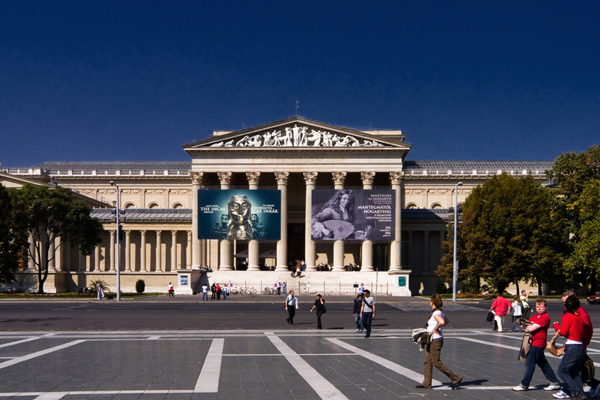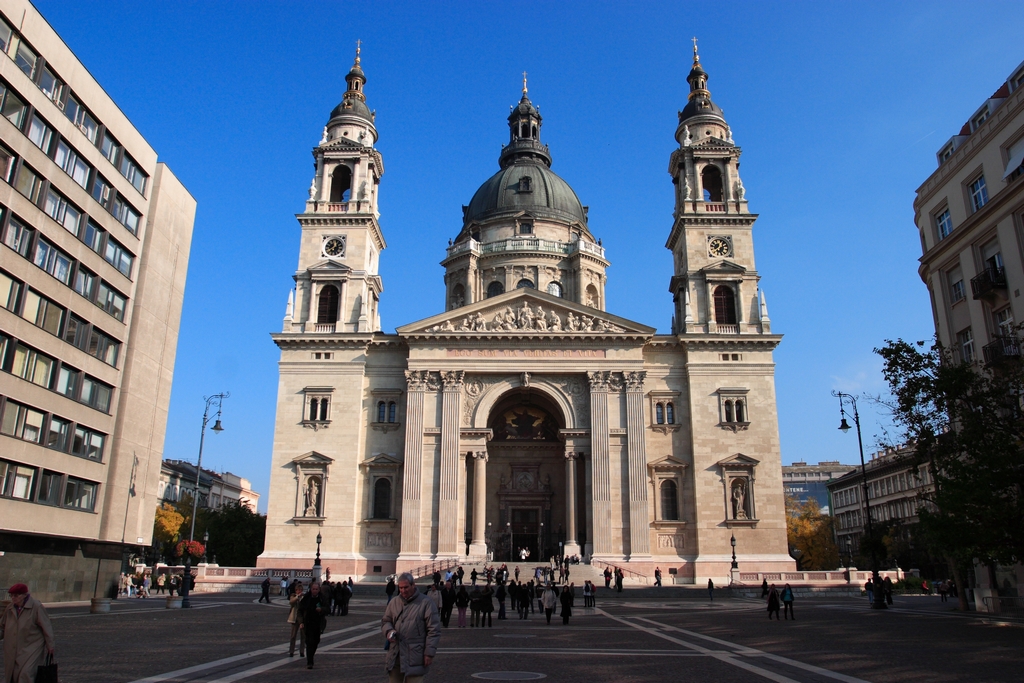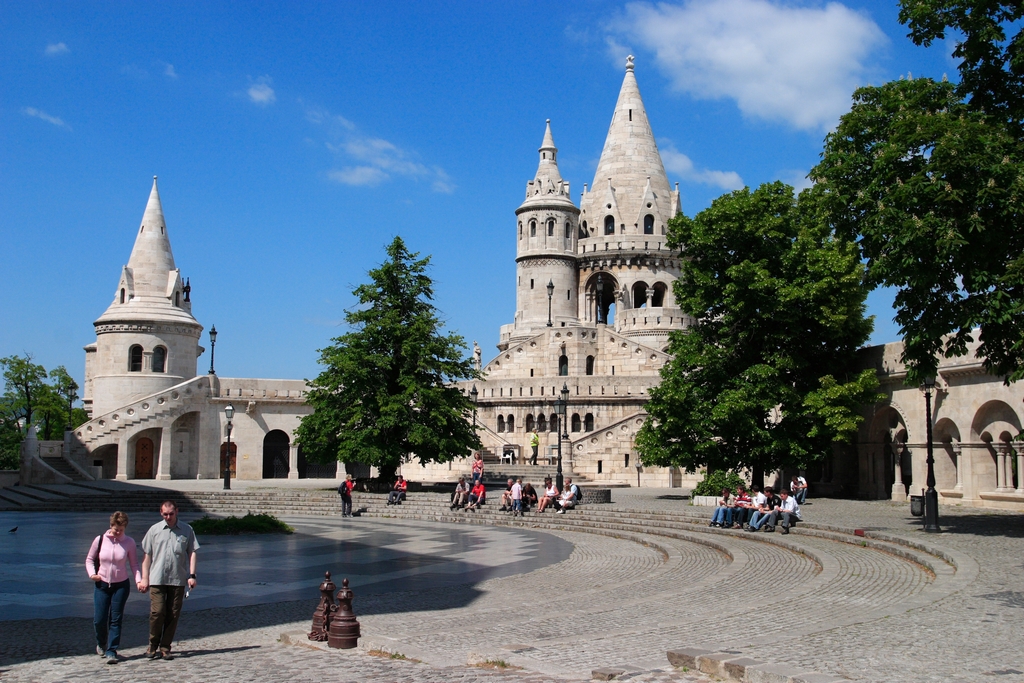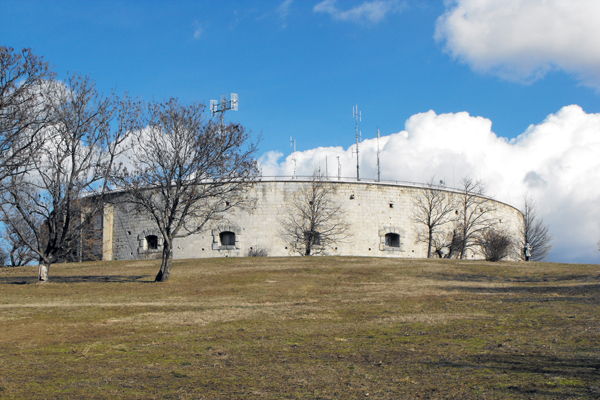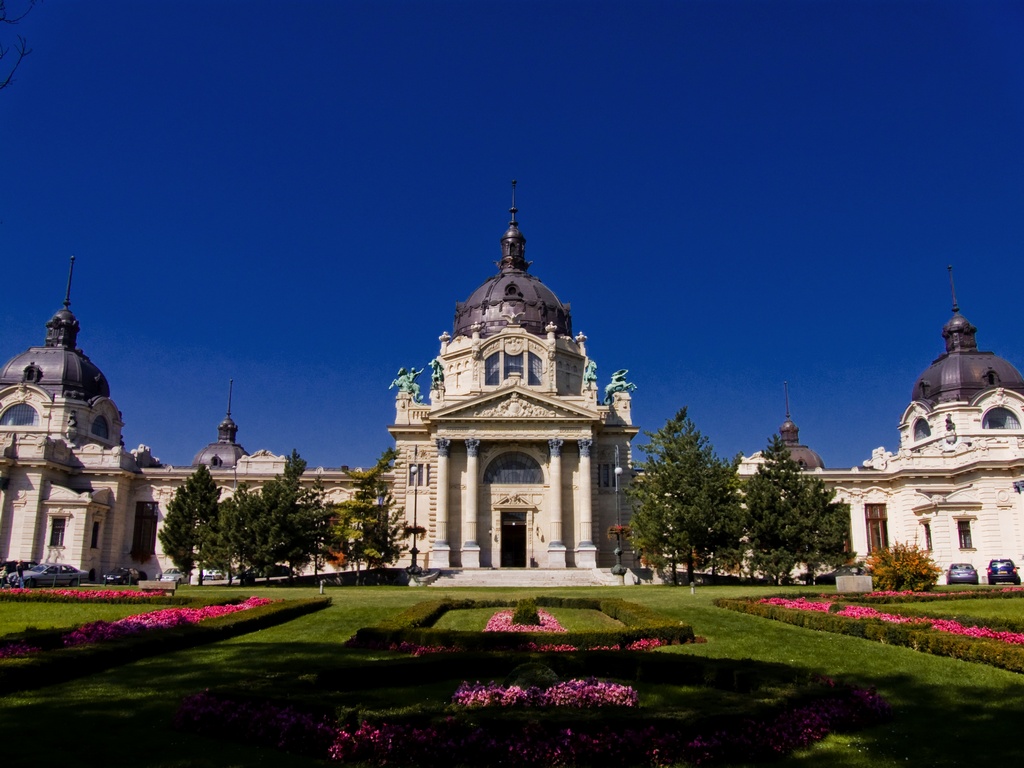Richly ornamented, The Hungarian State Opera House is one of the most beautiful opera houses in the world. It also houses the Hungarian State Balett.
This fascinating palace planned by Miklós Ybl is a major monument in Budapest. It opened in 1884 and enjoyed decades of success and fame with directors such as Gustav Mahler. The palace was planned for musical performances in terms of acoustics as well. The architectural solutions used were revolutionary: the hydraulic stage was an innovation used here for the first time in the world. A major attraction in the auditorium is the stunning gigantic bronze chandelier with its 3000 kilograms (cca. 6 613.867 pounds), a gem of applied arts. The decorated staircase in the hall captures the eye instantly, no wonder this is where a major social event, the Opera Ball takes place every year. Next to the main entrance we find two big statues of Ferenc Erkel and Ferenc Liszt, major former composers in Hungary. (Ferenc Erkel composed the music of the Hungarian national anthem, among others.) The side entrances are “guarded” by two sphinxes sculpted from marble, keeping a masque and a laurel between their claws. We can also see statues of Puttos, Muses and composers. There are guided tours within the Opera House daily.

